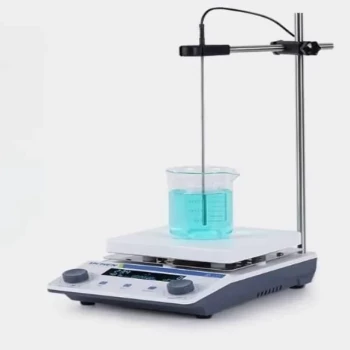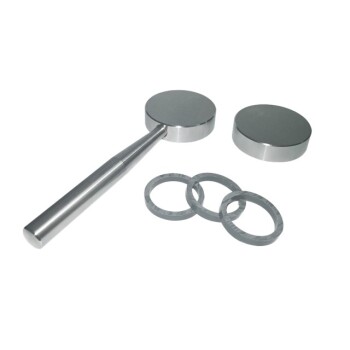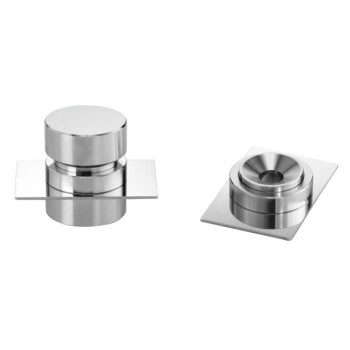Introduction to Isostatic Pressing
Isostatic pressing is a powder metallurgy technique that applies equal pressure from all directions to a compacted powder. There are two types of isostatic pressing: cold isostatic pressing (CIP) and hot isostatic pressing (HIP). CIP uses pressure at room temperature, while HIP applies heat and pressure to the powder. The advantages of isostatic pressing include the ability to create parts with high density and complex shapes. Isostatic pressing finds applications in various fields such as pharmaceuticals, materials science, and aerospace. Hydraulic laboratory presses are commonly used in isostatic pressing.
Table of Contents
Cold Isostatic Pressing (CIP)
Cold isostatic pressing (CIP) is a popular technique in the field of material science for producing high-quality and uniform products. The technique utilizes isostatic pressure to compact and consolidate powders into a desired shape, making it particularly useful for producing complex shapes, high-density ceramics, and composite materials.
How it Works
The process of CIP involves placing the powder into a sealed container and submerging it in a liquid, typically water. The container is then exposed to high pressure from all directions, which compresses the powder into a solid form. Compared to manual CIP, electrical CIP delivers better pressure control.
Types of CIP
There are two types of CIP recognized all over the world: wet bag technology and dry bag technology. In wet bag technology, the powder is filled in a mold and sealed tightly outside the pressure vessel. After filling the mold with powder, the mold is submerged in the pressure fluid within the pressure vessel. Then isostatic pressure is applied to the external surface of the mold, compressing the powder into a solid mass. Dry bag technology, on the other hand, is ideal for the mass production of materials. The mold is fixed in the pressure vessel, and the powder is filled in the mold while it is still in the pressure vessel. After this, isostatic pressure from the pressure liquid is applied to the external surface of the mold, compressing the powder into a solid mass with a compact microstructure.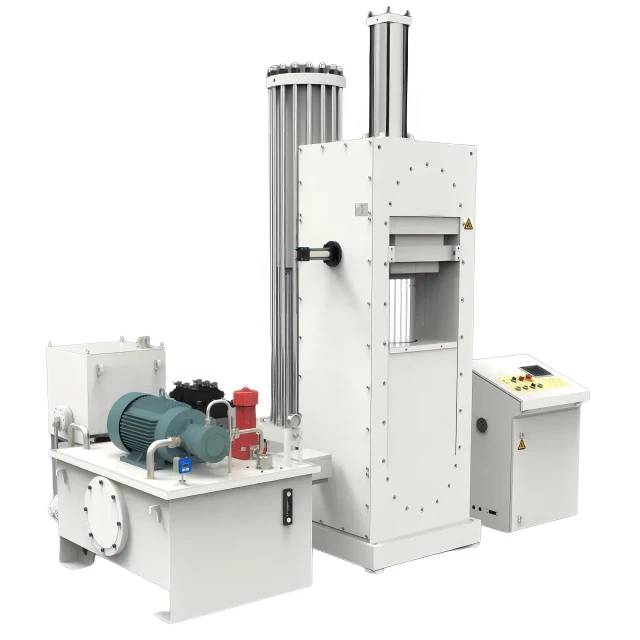
Advantages of CIP
CIP offers several advantages over other techniques. One of the main advantages is its ability to produce materials with high green strength, meaning that molded materials can withstand manipulation before they are completely hardened. CIP also ensures that materials have a uniform density, which results in uniform shrinkage when the material is going through other processes such as sintering. Cold isostatic pressing provides increased and more uniform density at a given compaction pressure and relative freedom from compact defects when applied to brittle or fine powders. Since the cross-section-to-height ratio of the part is not a limiting factor as it is with uniaxial pressing, CIP can be used to compact more complex shapes than possible with uniaxial pressing.
Applications of CIP
The applications of CIP span across various industries, including aerospace, automotive, and healthcare. Aerospace companies use CIP to produce lightweight, high-strength components for aircraft and spacecraft. In the automotive industry, CIP is used to produce engine components, such as valve seats and pistons. The healthcare industry uses CIP to produce medical implants, such as hip and knee replacements, due to its ability to produce high-density ceramics. CIP is also used for consolidation of ceramic powders, compressing of graphite, refractories and electrical insulators, and other fine ceramics for dental and medical applications.
Hot Isostatic Pressing (HIP)
Hot Isostatic Pressing (HIP) is a process that involves applying high temperature and pressure simultaneously to a material for a specified amount of time to improve its mechanical properties. This technique is commonly used in the aerospace and medical industries to manufacture high-performance materials like ceramics, metals, and composites.
How HIP Works
The HIP process involves placing a material in a sealed container and subjecting it to high temperatures and pressures. The combination of temperature and pressure results in the consolidation of the material, reducing its porosity and improving its mechanical properties. The process is effective in bonding dissimilar materials, repairing components, and creating near-net shape parts. Argon gas is the most commonly used pressure medium in HIP.
Advantages of HIP
The advantages of HIP include improved material properties, enhanced performance, and durability. HIP's ability to create highly dense materials with tailored properties makes it an attractive option in many high-tech industries. HIP can reduce scrap and improve yield, optimize material properties, and minimize heat treatment requirements. It can also reduce the total production costs of a product.
Applications of HIP
In the aerospace industry, HIP is used to produce turbine blades, engine components, and rocket nozzles. The medical industry uses HIP to create prosthetic implants, such as hip and knee replacements, as well as dental implants. HIP has also found applications in the production of advanced ceramics used in electronics and cutting tools.
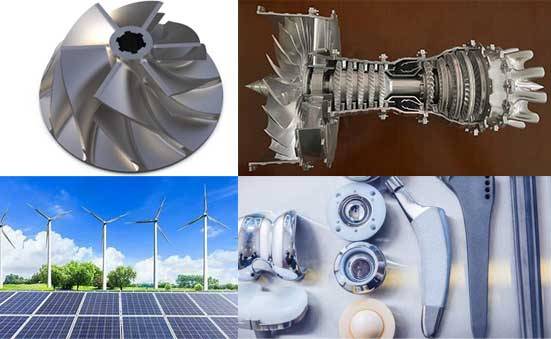
Difference between HIP and Hot Pressing
HIP applies isostatic pressure to materials using gas pressure, while hot pressing applies only uniaxial pressure. HIP can provide material shapes not much different from the initial one after pressure, while hot pressing can't keep the initial shape of the material because pressure is applied only to the convex portions.
HIP Treatment
Materials need various treatments depending on the situations. The most typical methods include 'Capsule Method' and 'Capsule Free Method'. 'Capsule Method' is to carry out HIP after enclosing powder or a body molded from powder in a gastight capsule and evacuating the capsule.
Conclusion
In conclusion, Hot Isostatic Pressing (HIP) is a valuable technology in the field of laboratory equipment. The application of HIP is broad and diverse, and its potential is still being explored. HIP is an effective method to manufacture high-performance materials with improved properties, bonding dissimilar materials, repairing components, and creating near-net shape parts. HIP has found applications in the aerospace and medical industries, as well as the production of advanced ceramics used in electronics and cutting tools.

Applications of Isostatic Pressing
Isostatic pressing is a unique technique employed in the production of high-quality ceramic, metal, and plastic components. It involves applying uniform pressure from all directions to a material, usually in powder form, to create a dense and uniform product. This technique is widely used in various industries to produce complex parts with high precision and accuracy. Let's explore some of the applications of isostatic pressing in different industries.
Aerospace Industry
Isostatic pressing is used widely in the aerospace industry to produce high-performance components for aircraft engines and turbines. The technique is employed to create parts with complex shapes and high strength-to-weight ratios, which are essential for the efficient operation of aircraft. Isostatic pressing is also used to create lightweight and durable aerospace castings, jet aircraft engine components, and turbine blades.
Medical Industry
The medical industry also benefits from the use of isostatic pressing. The technique is used to produce implantable devices and prosthetics. Isostatic pressing is ideal for creating complex shapes and structures that are biocompatible and can withstand the harsh environment of the human body. The technique is also used to create dental implants, surgical instruments, and bone substitutes.
Automotive Industry
Isostatic pressing is also widely used in the automotive industry to produce engine components, such as pistons and cylinder heads, with high strength and durability. The technique is also used to create brake pads, clutch plates, and other critical components that require high precision and accuracy.
Other Industries
Apart from these three industries, isostatic pressing is also used in various other sectors. The technique is used to produce balls, tubes, rods, nozzles, fuse tubes, teeming tubes, lighting tubes, grinding wheels, sodium-sulfur battery electrolyte, spark plug insulators, sewer pipes, dinnerware, crucibles, oxygen sensors, central heating water pump shafts, and rocket nose cones. Isostatic pressing is used as an alternative production method to die compaction, extrusion, slip casting, and injection molding.
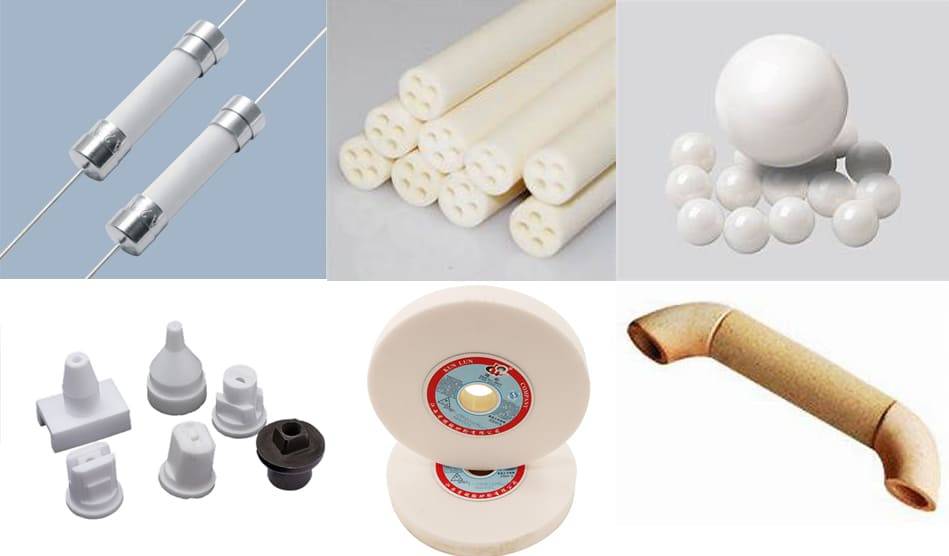
Advantages and Disadvantages
Isostatic pressing offers several advantages, including high precision, uniformity, and the ability to produce complex parts with high strength and durability. The process also allows for the pressing of compacts with two or more layers of powder possessing different characteristics. However, the technique has some limitations, including lower accuracy of pressed surfaces adjacent to the flexible bag, relatively expensive spray-dried powder normally required for fully automatic dry bag presses, and lower production rates than for extrusion or die compaction.
In conclusion, isostatic pressing is a versatile technique that finds applications in various industries. The technique offers several benefits, including high precision, uniformity, and the ability to create complex parts with high strength and durability. As technology continues to evolve, it is likely that isostatic pressing will be used more frequently in the production of critical components across a broad range of industries.
Isostatic Pressing in Pharmaceuticals
Isostatic pressing is a powerful manufacturing process that has been used in various industries for several decades, including the pharmaceutical industry. In this industry, the process is used to create high-density drug formulations that can be administered orally or intravenously. This process involves applying uniform pressure to a powder sample using a fluid medium such as gas or liquid. The uniform pressure applied results in a high-density product with improved mechanical properties, such as enhanced strength and resistance to wear and tear.
Improved Bioavailability
Isostatic pressing has several advantages over traditional compaction methods. One of the most significant advantages is the ability to produce drug formulations with improved bioavailability, allowing for more effective drug delivery. The process can be used to create drug formulations with a higher drug content in a smaller dose, leading to a more targeted effect on the patient.
Complex Shapes and Density Control
Another advantage of isostatic pressing in the pharmaceutical industry is the ability to produce complex shapes in drug formulations. The process can be used to create drug formulations with irregular shapes and sizes, which can be difficult to achieve with traditional compaction methods. Additionally, the process can be used to control the density of the final product, which is critical in the pharmaceutical industry to ensure consistent dosing.
Production of High-Quality Drugs
Isostatic pressing is a powerful tool in the pharmaceutical industry that can lead to improved drug formulations and better patient outcomes. The process produces high-quality drugs with enhanced mechanical properties, ensuring that the drugs remain intact during manufacturing, transportation, and storage.
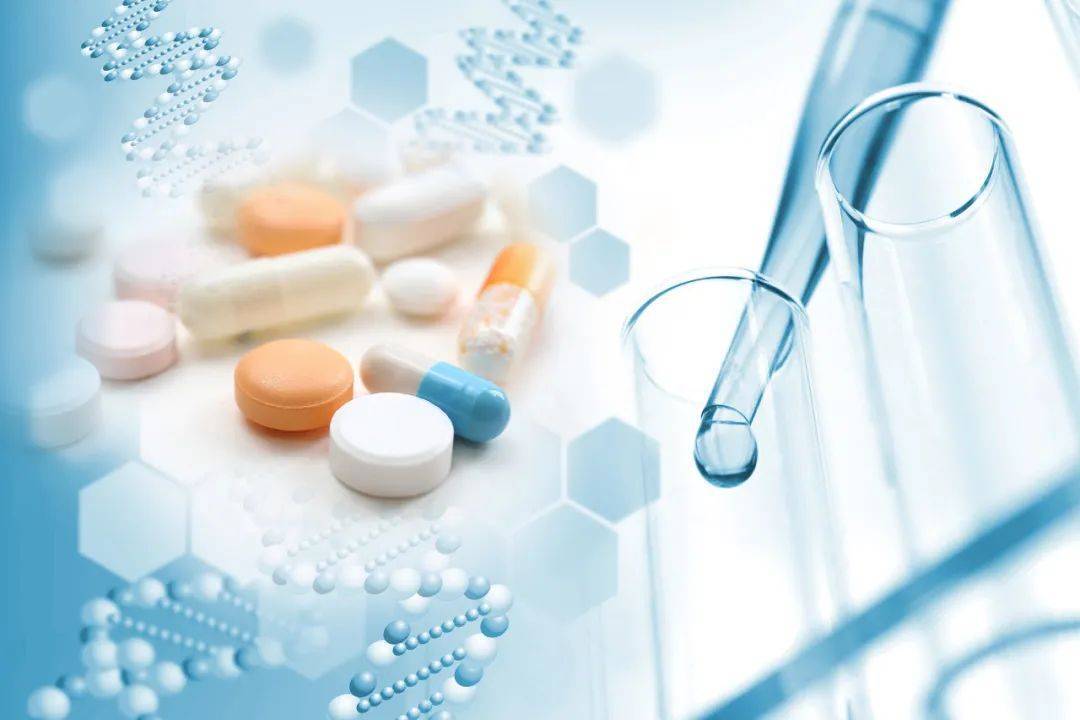
Conclusion
In conclusion, isostatic pressing is an essential manufacturing process in the pharmaceutical industry. It provides a range of advantages over traditional compaction methods, including the ability to produce complex shapes, control the density of the final product, and improve the bioavailability of drugs. With its ability to create high-quality drugs, isostatic pressing is a crucial tool for the pharmaceutical industry, enabling manufacturers to produce targeted and efficient drug formulations that lead to better patient outcomes.
Isostatic Pressing in Materials Science
Isostatic pressing is an important technique in the field of materials science that has a wide range of applications. This process involves applying uniform pressure to a material from all directions, resulting in uniform density and improved mechanical properties.
Applications of Isostatic Pressing
One of the main applications of isostatic pressing is in the production of ceramics and composites. This technique is used to densify powders and improve their mechanical properties, making them suitable for use in a variety of industries such as aerospace, defense, and energy. Isostatic pressing is also used in the production of high-performance alloys, such as those used in the aerospace industry. The process can be used to produce parts with complex shapes and precise tolerances, making it a valuable tool for manufacturing. Additionally, isostatic pressing is used in the production of nuclear materials, where it is used to produce fuel pellets that are used in nuclear reactors.
Types of Isostatic Pressing
Cold isostatic presses, warm isostatic presses, and hot isostatic presses are a type of equipment that uses high-pressure gases to process materials. They are based on the principle of heating or cooling the gas to a certain temperature and then applying a uniform pressure to the material through a closed vessel. Cold isostatic presses are generally used in room temperature environments and are suitable for temperature-sensitive materials such as ceramics, metal powders, etc. Warm isostatic presses work at medium temperature and are suitable for materials with certain requirements on temperature, such as plastics, rubber, etc. The working temperature of hot isostatic press is a high temperature, suitable for materials with high-temperature requirements, such as metals, alloys, etc.
Common Applications of Cold Isostatic Pressing
Common applications for cold isostatic pressing include the consolidation of ceramic powders, graphite, refractory materials, electrical insulators, and the compression of advanced ceramics. Materials include silicon nitride, silicon carbide, boron nitride, boron carbide, titanium boride, spinel, etc. The technology is expanding into new applications such as the compression of sputtering targets, the coating of valve components used to reduce cylinder wear in engines, telecommunications, electronics, aerospace, and automotive applications.
Importance of Material Characterization
Like other powder metallurgy processes, the properties of the metal powder used in isostatic pressing will affect the final sintered component’s properties. For this reason, these properties should be carefully characterized to ensure optimum final component properties. Phase composition and grain size are also important characteristics to control, because they can affect powder hardness and melt properties. These, in turn, affect not only pressing efficiency and sintering behavior but also the mechanical properties of the pressed part. Finally, the powder used must also comply with the alloy composition of the material specified.
Cold Isostatic Pressing Technical Considerations
Compared with cold pressing, isostatic compaction applies pressure uniformly over the entire surface of the mold. Die-wall friction, which exerts a major influence on the density distribution of cold-pressed parts, is absent; so much more uniform densities are obtained. The elimination of die-wall lubricants also permits higher pressed densities and eliminates problems associated with lubricant removal prior to or during final sintering. Furthermore, if necessary, air can be evacuated from the loose powder before compaction. Consequently, isostatic compaction provides increased and more uniform density at a given compaction pressure and relative freedom from compact defects when applied to brittle or fine powders. Because of the uniform compaction pressure, the cross-section-to-height ratio of the part is not a limiting factor as it is with uniaxial pressing. In addition, cold isostatic pressing can be used to compact more complex shapes than possible with uniaxial pressing.
Related Products
- Automatic Lab Cold Isostatic Press CIP Machine Cold Isostatic Pressing
- Vacuum Cold Mounting Machine for Sample Preparation
- Laboratory Small Constant Temperature Heated Magnetic Stirrer Heater and Stirrer
- Automatic High Temperature Heated Hydraulic Press Machine with Heated Plates for Lab
- XRF & KBR steel ring lab Powder Pellet Pressing Mold for FTIR
Related Articles
- Electric Lab Cold Isostatic Press (CIP): Applications, Benefits, and Customization
- Application of Hot Isostatic Pressing Technology in Special Ceramic Preparation
- Cold Isostatic Pressing (CIP): A Proven Process for High-Performance Parts Manufacturing
- Additive Manufacturing for Isostatic Pressing: Bridging New Technology with Traditional Manufacturing
- Understanding Cold Isostatic Pressing and Its Applications



